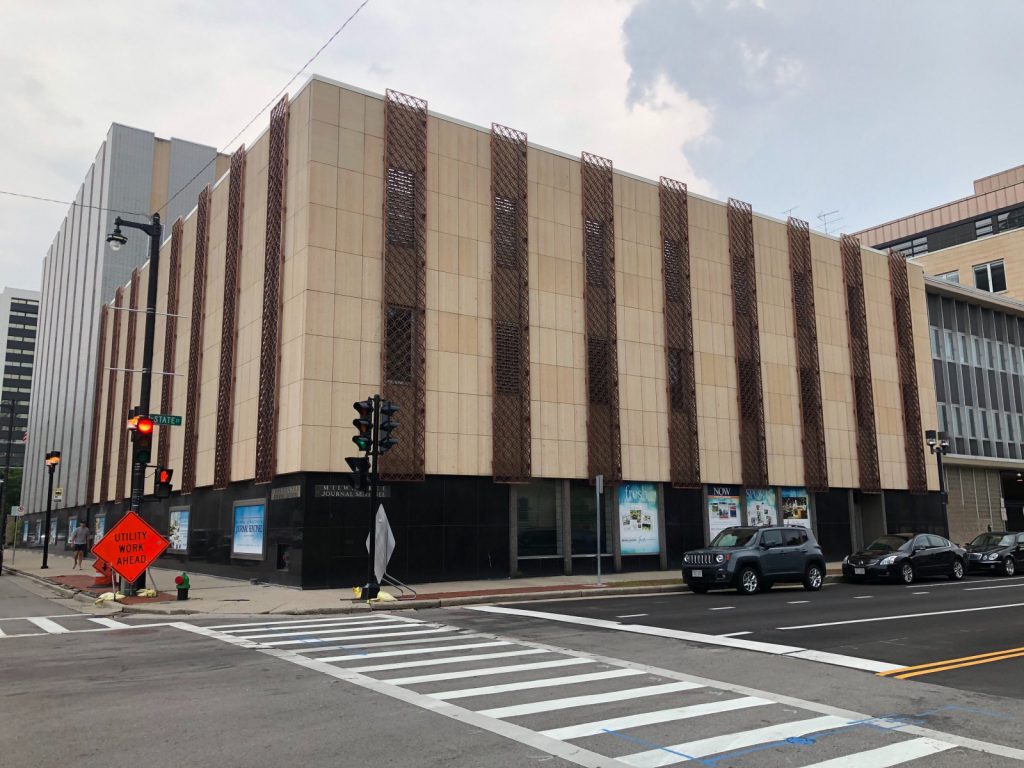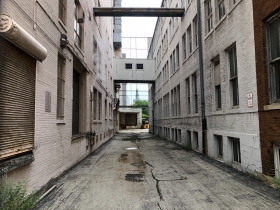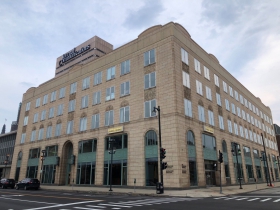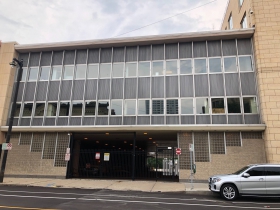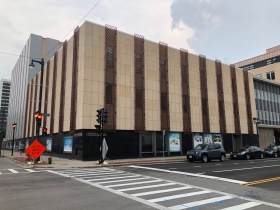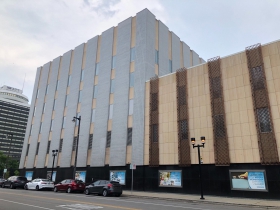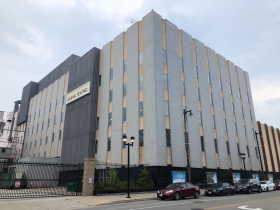$1 Million For ‘Really Unique Project’
Headline: Journal Sentinel building from 1960s would become housing for MATC students.
“This is a really unique project for us to be involved in, and is really unlike anything we have done,” said Department of City Development economic development specialist Dan Casanova on Tuesday morning to members of the Zoning, Neighborhoods & Development Committee.
He was referring to the city contributing $1 million to the redevelopment of the Milwaukee Journal Sentinel complex. On its face, the project seems anything but unique. A number of old, multi-story buildings have been converted to housing in Milwaukee.
But few of the redeveloped buildings in Downtown have become affordable housing, and none of them have been explicitly for students at a technical college. A 1962 addition to the complex, which appears from the street to be three attached buildings, would be redeveloped as 77 apartments with 189 total bedrooms. Milwaukee Area Technical College, whose downtown campus is two blocks west, would lease the entire building and set aside 27 units as affordable housing for its students making less than 60 percent of the area median income.
The city would dedicate $1 million in incremental property tax revenue generated by the redevelopment to support the project. Known as a developer-financed tax incremental financing district, the structure is effectively a property tax rebate that places the risk on the developer.
“I think there are two significant public purposes involved here,” said area Alderman Robert Bauman. He said the public funds were being used to benefit lower-income college students.
A second purpose is one partially of Bauman’s creation. He, along with Ald. Michael Murphy, moved to have the building historically designated in early 2019. “When we designate buildings we frequently place an additional burden on property owners; it’s only fitting that the public should absorb an additional cost.” A portion of the city’s funds would go to restoring the frieze (stone artwork wrapping the building) that depicted the history of communication and was removed in 2011.
The frieze is on the six-story portion of the complex that was built in 1924. Commonly known as the Journal Communications building, that portion of the complex would be redeveloped into market-rate housing. Bergner said the two buildings are currently connected by hallways that would be closed. Lightwells would inserted into the interior of each portion of the complex to provide windows for interior units.
Council members Ashanti Hamilton and Milele A. Coggs both said they were happy to see affordable housing being created Downtown.
The city’s financial modeling assumes the $54 million project will only be assessed at $24.7 million when completed. Assessments for rental properties are based on income and affordable housing projects regularly are assessed for less than their construction cost, with public financing closing the gap. Financing for the project also relies on historic preservation tax credits and private financing.
A third building, the vacant four-story structure at 918 N. Vel R. Phillips Ave. formerly used by the Milwaukee Sentinel, is not included in the current plans. A large parking lot at the southeast corner of the block is also not part of the plan, nor is the building occupied by Major Goolsby’s restaurant at the southwest corner of the block. J. Jeffers & Co. owns all those properties, having acquired them in October 2019.
The TIF district being amended originally was created in 2015 to provide $20 million to the Milwaukee Bucks, including $12 million for the plaza outside Fiserv Forum and $8 million towards a new parking structure. Incremental property taxes from the Deer District and team training facility pay back the project debt.
The committee unanimously backed the financing plan.
The board of the Redevelopment Authority of the City of Milwaukee approved the financing plan last week. It next goes before the full Common Council on July 28th.
Photos
Renderings
Legislation Link - Urban Milwaukee members see direct links to legislation mentioned in this article. Join today
If you think stories like this are important, become a member of Urban Milwaukee and help support real, independent journalism. Plus you get some cool added benefits.
More about the Journal Square development
- Eyes on Milwaukee: Inside the Newly Opened Journal Commons - Jeramey Jannene - Nov 15th, 2022
- Friday Photos: Journal Square Redevelopment Nears Completion - Jeramey Jannene - Jun 24th, 2022
- Eyes on Milwaukee: Jeffers, MATC Celebrate Student Housing Complex - Jeramey Jannene - Aug 17th, 2021
- Eyes on Milwaukee: Jeffers Starts Work on Second Journal Apartment Project - Jeramey Jannene - Aug 3rd, 2021
- Plats and Parcels: Journal Sentinel Complex Becoming Education Pipeline - Jeramey Jannene - Mar 28th, 2021
- Eyes on Milwaukee: Journal Sentinel Redevelopment Secures Two Environmental Cleanup Loans - Jeramey Jannene - Oct 16th, 2020
- Eyes on Milwaukee: $1 Million For ‘Really Unique Project’ - Jeramey Jannene - Jul 21st, 2020
- Eyes on Milwaukee: City Funds Get First Approval for Journal Square Lofts - Jeramey Jannene - Jul 16th, 2020
- Eyes on Milwaukee: Jeffers Advancing New Plan to Redevelop Journal Sentinel Complex - Jeramey Jannene - Jul 9th, 2020
- Eyes on Milwaukee: $6.9 Million Won for 317 Affordable Apartments - Jeramey Jannene - Apr 28th, 2020
Read more about Journal Square development here
Political Contributions Tracker
Displaying political contributions between people mentioned in this story. Learn more.
- May 15, 2018 - Ashanti Hamilton received $50 from Danielle Bergner
- March 28, 2016 - Michael Murphy received $400 from Danielle Bergner
Eyes on Milwaukee
-
Church, Cupid Partner On Affordable Housing
 Dec 4th, 2023 by Jeramey Jannene
Dec 4th, 2023 by Jeramey Jannene
-
Downtown Building Sells For Nearly Twice Its Assessed Value
 Nov 12th, 2023 by Jeramey Jannene
Nov 12th, 2023 by Jeramey Jannene
-
Immigration Office Moving To 310W Building
 Oct 25th, 2023 by Jeramey Jannene
Oct 25th, 2023 by Jeramey Jannene


